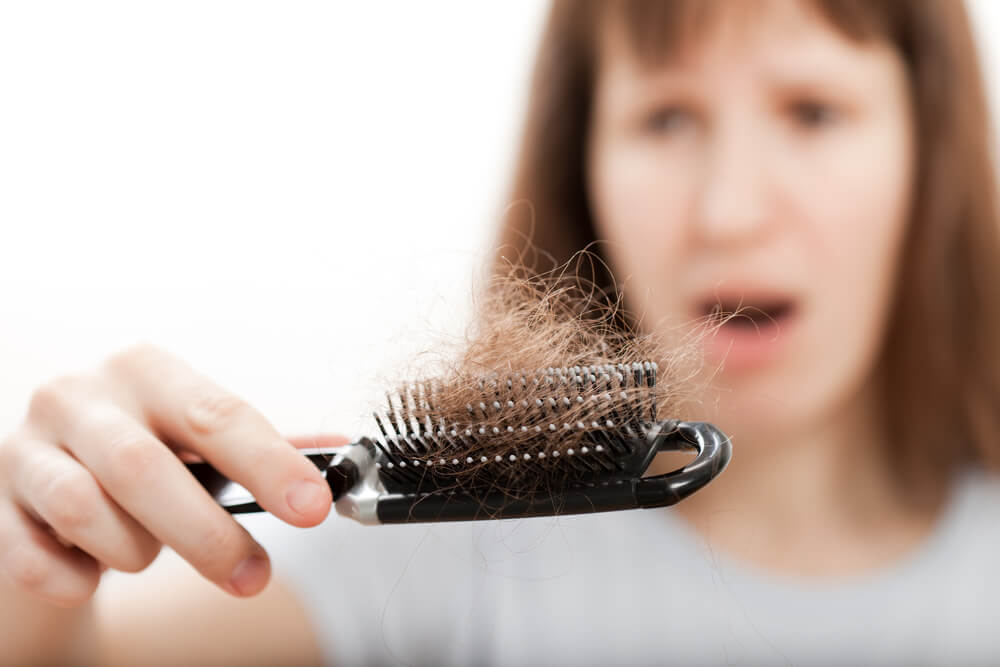

Who is affected by hair loss and how to choose the right treatment for you
There are many different reasons why someone might be experiencing hair loss. It’s often an unavoidable part of ageing, but there are so many different factors that can contribute beyond this. These could include illness, iron deficiency, or even stress.
Fortunately, there are lots of treatments and coping strategies available for anyone going through the process. If you find that hair loss is affecting your general wellbeing, it’s important to seek help as soon as possible, and find a solution that works for you.
In this post, we’ll be focussing on several of the skin conditions that can cause hair loss in sufferers, and discuss how they can be managed to reduce any further damage occurring.
Psoriasis
Psoriasis is a condition that causes patches of thick, scaly skin to form. The affected areas are usually on the elbows, knees, scalp, lower back, or face. One of the primary side effects of scalp psoriasis is hair loss. When psoriasis forms on the scalp, it can cause the hair follicles to become inflamed. This inflammation can damage the hair follicles and prevent new hair from growing. In some cases, the inflammation can also lead to scarring, which can further damage the hair follicles and cause permanent hair loss.
While there is no cure for psoriasis, there are treatments that can help to reduce the symptoms and improve the appearance of the skin. The severity of your condition will determine the type of treatment you’ll be recommended. For example, mild cases of scalp psoriasis can generally be treated by a combination of special shampoo and ointment, like our Emmy shampoo and Evie conditioner duo that works to clarify the scalp while also soothing inflammation and allowing stronger hair growth. Vitamin D analogues such as calcipotriol and tacalcitol are another common treatment, particularly for mild to moderate cases.
Seborrheic dermatitis
Seborrheic dermatitis is a skin condition that can affect the scalp, causing flaking, redness, and itching. The exact cause of seborrheic dermatitis is unknown, but it is thought to be related to an overgrowth of a yeast-like fungus called Malassezia. This fungus is found naturally on the skin, but it can multiply in people who have a weakened immune system or a buildup of oil and dead skin cells on the scalp.
In addition to causing hair loss, seborrheic dermatitis can also lead to dandruff and an itchy, scaly scalp. Just as is the case with psoriasis, there are treatments for seborrheic dermatitis that can help to control the symptoms and prevent hair loss. These include shampoos, creams, and ointments. In addition, using a hair oil like our lightweight Lotus Oil in between washes can help hydrate the scalp and reduce itchiness and dandruff. In severe cases, oral antifungal medication may also be necessary.
On top of the medicinal treatments, there are also some self-care remedies you can try to help manage the condition. These include:
- Regular washing of your scalp
- Avoiding using styling products such as gel in your hair
- Using alcohol-free products in your hair or on your skin where possible
Tinea capitis
Tinea capitis, also known as scalp ringworm, is a fungal infection that typically affects the scalp and hair follicles. The most common symptom of tinea capitis is hair loss, which can occur in patches or diffusely throughout the affected area. In some cases, the hair may break off at the scalp, leading to stubbly regrowth. Other symptoms include itching, scaling, and redness.
Tinea capitis is usually diagnosed based on these symptoms and the results of a Wood's lamp examination. Treatment typically involves antifungal medications, such as creams or sprays. Be sure to speak to your pharmacist first to find the most suitable remedies. With proper treatment, tinea capitis usually clears up within 6-8 weeks. However, it is important to continue treatment for the full duration to prevent recurrence. In some cases, tinea capitis can lead to permanent hair loss.
There are also plenty of things you can do to help prevent the infection from spreading. For instance, be sure to regularly wash your linen, and make a conscious effort to clean your hands after coming into contact with soil or animals. You’ll also need to start treatment as soon as you notice any symptoms – this will help to keep you and those around you safe.
There are many different reasons for hair loss, so it's important to find the correct cause of yours and treat it accordingly. Using natural hair and scalp products that aren't filled with artificial fragrance or chemicals to help control the symptoms can help alleviate some of the discomfort you may be experiencing.
This article was written by Oliver Whitmer and edited by Blossom Essentials.
